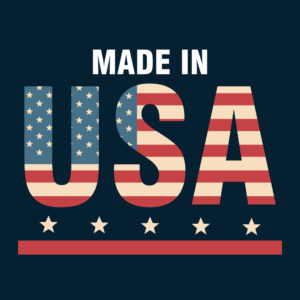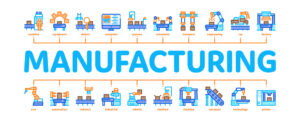 I attended the annual Women in Manufacturing Summit earlier this week. There were over 2,100 people at the Summit in Boston which offered more than 60 educational sessions. I was fortunate to attend the presentation on Reshoring by Rosemary Coates, Executive Director of the Reshoring Institute.
I attended the annual Women in Manufacturing Summit earlier this week. There were over 2,100 people at the Summit in Boston which offered more than 60 educational sessions. I was fortunate to attend the presentation on Reshoring by Rosemary Coates, Executive Director of the Reshoring Institute.
After a summary of how US manufacturing got to where we are today, she spoke about the changes in the past few years that have affected reshoring. In addition to the obvious, the pandemic, other changes include:
- Travel Restrictions
- Lean Methodology
- Trade Wars
- Supply Chain Interruptions (shipping accidents and strikes)
- War in Ukraine
- Uyghur Forced Labor Prevention Act (UFLPA), etc.
There are now many incentives for reshoring. From tax reforms and incentives to a stronger than ever Made in America mentality, reshoring is becoming a competitive option for many large companies. That’s not to say it’s for everyone. In Rosemary’s presentation she stated that products like apparel and toys would remain offshore. However, semiconductors, pharmaceuticals (some would argue medical devices) and plastics are being reshored. There are a variety of reasons these markets are being reshored to reduce the impact of supply chain disruptions.
Large companies are rethinking their global sourcing and manufacturing strategies. A recent article in Industry Today addresses the need for manufacturers to bolster their supply chains. One way to do this is to ensure they have local and regional suppliers.
If your customers/prospects are investing in their supply chain, be sure you’re top of mind. How often are you communicating with them? Have you done enough research to understand their interests. Are you engaged with more than one person at the company?
If you need to build a communication strategy that takes advantage of reshoring, Contact Us and we’ll be happy to help.
 It’s manufacturing month and I’m feeling inspired. I was at the ElevateHer quarterly meeting on Tuesday, the CT Manufacturing Summit on Wednesday, and will be at the Women in Manufacturing (WIM) national summit next week. There’s so much going on that it’s hard to keep up. For that reason, I thought, why not share what I’ve learned? Here are some interesting articles. Take a look and let me know what you think.
It’s manufacturing month and I’m feeling inspired. I was at the ElevateHer quarterly meeting on Tuesday, the CT Manufacturing Summit on Wednesday, and will be at the Women in Manufacturing (WIM) national summit next week. There’s so much going on that it’s hard to keep up. For that reason, I thought, why not share what I’ve learned? Here are some interesting articles. Take a look and let me know what you think. Cybersecurity management in the manufacturing industry is more important now than ever. Manufacturing is the most frequently targeted sector worldwide, likely because it’s one of the most rapidly changing industries in the global economy.
Cybersecurity management in the manufacturing industry is more important now than ever. Manufacturing is the most frequently targeted sector worldwide, likely because it’s one of the most rapidly changing industries in the global economy. Have you implemented a strategy to utilize advanced data analytics and AI for your business? If the answer to that question is “no”, find out how this new software is saving time, money and human capital.
Have you implemented a strategy to utilize advanced data analytics and AI for your business? If the answer to that question is “no”, find out how this new software is saving time, money and human capital. A steering wheel and gas pedal are both necessary to operate a car but have different functions. The same can be said for marketing and sales. To operate a machine various pieces and parts are necessary; a machine will run smoothly if it has the proper maintenance and parts operating it. Similarly, the same is true with marketing and sales.
A steering wheel and gas pedal are both necessary to operate a car but have different functions. The same can be said for marketing and sales. To operate a machine various pieces and parts are necessary; a machine will run smoothly if it has the proper maintenance and parts operating it. Similarly, the same is true with marketing and sales. I’ve been a self-proclaimed manufacturing cheerleader since day one. Even before becoming an official manufacturing ambassador for the state of CT, Web Savvy Marketers and the CT Manufacturers Resource Group (
I’ve been a self-proclaimed manufacturing cheerleader since day one. Even before becoming an official manufacturing ambassador for the state of CT, Web Savvy Marketers and the CT Manufacturers Resource Group (
 I was recently listening to a podcast when someone posed this question: “Would you rather be an expert in your field, or a jack of all trades and master of none?”
I was recently listening to a podcast when someone posed this question: “Would you rather be an expert in your field, or a jack of all trades and master of none?” Artificial intelligence (AI) is transforming the world around us, and these AI programs are making it possible for everyone to experience the benefits of this powerful technology. From writing and coding assistants to creative tools and productivity boosters, there is an AI program out there for everyone.
Artificial intelligence (AI) is transforming the world around us, and these AI programs are making it possible for everyone to experience the benefits of this powerful technology. From writing and coding assistants to creative tools and productivity boosters, there is an AI program out there for everyone.